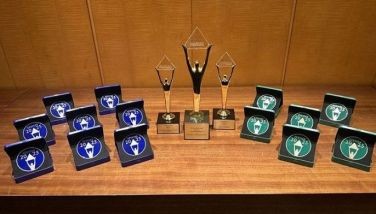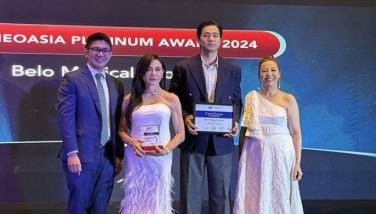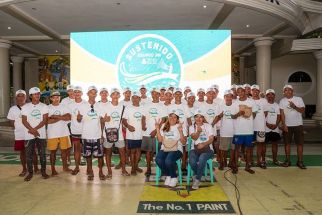Our story in DC

WASHINGTON – This is a story of many stories and it begins with a group of Filipino bandsmen who tramped through a snowstorm while playing Wagner, Beethoven and what-have-you, here in the US capital more than a hundred years ago.
They wowed Americans and the American president one historic day of 1909, a day when the thickest snow and a 120-kilometer-an-hour gale descended on Washington.
It was the first time the men had seen snow, making it the coldest day of their lives.
But on that afternoon of March 4, 1909, no doubt an important date in American history, the Filipino men of the Philippine Constabulary Band braved one of the worst blizzards ever recorded in the city, to lead the parade for the inauguration of William Howard Taft as the 27th president of the United States.
Taft, tasked to organize a civilian government in the Philippines in the early 1900s, was a music lover and was instrumental in organizing the band of the Philippine Constabulary, that American-era gendarmerie-type police force.
When Taft became president of the United States, he wanted the Philippine Constabulary Band to be there and they obliged.
Now, why am I talking about a Filipino band from more than a century ago?
Philippines on the Potomac
It’s because of Georgetown University Professor Dr. Erwin Tiongson. A Filipino who hails from Nueva Vizcaya, he is behind the so-called Philippines on the Potomac project and author of the book titled “Philippine-American Heritage in Washington, D.C.”
He, together with his family, started the project, which he said is a 12-year-old initiative aimed at finding traces of Philippine history in DC. The book is an offshoot of the project.
Not many Filipinos know that the Philippine Constabulary Band is an important part of the Philippine-American story, Dr. Tiongson said in his keynote address here on Monday, which served as the kick-off activity of the United States’ Friends, Partners, Allies Program for Journalists.
I am here as part of the program, together with nine other Filipino journalists. We listened intently as Dr. Tiongson took us to a rabbit hole of sorts, learning about many little-known vignettes of the Philippine-American heritage here in DC.
Dr. Tiongson clarifies the usual and perhaps singular notion about American colonial influence on the Philippines.
While US influence on the Philippines is huge, he said that the Philippines’ influence on America is just as important – and perhaps even more interesting.
The Philippine Constabulary Band and our famed Luneta in Manila where the band used to perform in the 1900s are some examples of this influence.
As I mentioned, the band made history as the musical escort during Taft’s presidential inauguration. After that, they even performed at New York’s Hippodrome which, according to The New York Times, was “met with a rousing reception” and “encore after encore” was demanded.
“Dressed in the natty uniform of the Philippine Constabulary, ‘the little brown men’ made an excellent appearance…” (New York Times, March 8, 1901).
Luneta
The Tafts fell in love with the band as much as they did with Luneta – where they often watched the band perform during their time in the Philippines.
Thus, they thought of creating a similar public space in Washington, according to Dr. Tiongson’s book.
“Both William Howard Taft and his wife, Helen Herron Taft, had lived in the Philippines while Taft was governor general, and they had spent many evenings listening to the Philippine Constabulary Band perform at the Luneta. The space impressed her greatly.”
In her memoir, “Recollection of Full Years,” First Lady Helen Taft wrote:
“That Manila could lend anything to Washington may be a surprise to some persons, but the Luneta is an institution whose usefulness to society in the Philippine capital is not to be overestimated.”
Thus, the West Potomac Park here in Washington was developed as a Luneta of sorts, where all of Washington “could meet, either on foot, or in vehicles, at five o’clock on certain evenings, listen to band concerts and enjoy such recreation as no other spot in Washington could afford,” said the First Lady.
Aside from the Potomac, there are many other places in DC that are teeming with Philippine history, says Dr. Tiongson, who has already identified at least 150 places here that played a part in this Philippine-American story.
Manuel L. Quezon, for instance, addressed members of the US Congress in May 1910 at the iconic Capitol Building, stressing the Philippines’ desire for independence.
Years later, in 1933, Union Station DC witnessed the arrival of the Philippine Independence Delegation, led by Quezon, when they traveled to the US to lobby more aggressively for the country’s independence.
The National Gallery of Art, meanwhile, has the abstract expressionist works of Filipino-American artist Alfonso Ossorio, one of the six grandchildren of Don Miguel Ossorio who founded sugar milling giant Victorias Milling Co.
These and more are what one will learn from Dr. Tiongson’s Philippines on the Potomac Project.
For him, the project isn’t finished yet. It’s like a treasure hunt of sorts, he said.
Asked why he is doing this, Dr. Tiongson says it’s all about preserving something valuable, which is the story of Filipinos.
“My hope is that as I share these stories, maybe enough people will find it interesting and retell them. This way, we are able to preserve our stories.”
* * *
Email: eyesgonzales@gmail.com. Follow her on X, formerly Twitter @eyesgonzales. Column archives at EyesWideOpen (Iris Gonzales) on Facebook.
- Latest
- Trending






















